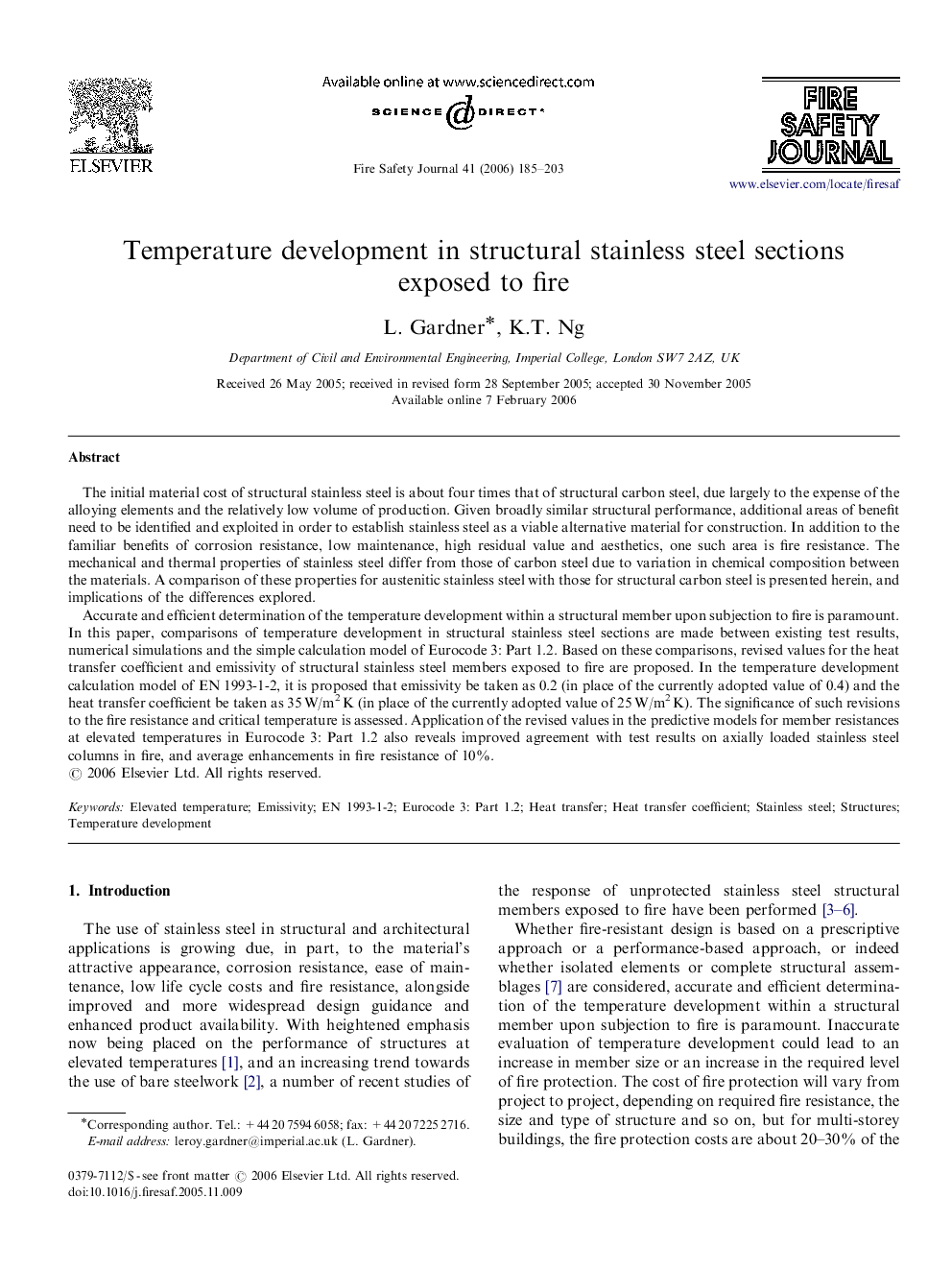| کد مقاله | کد نشریه | سال انتشار | مقاله انگلیسی | نسخه تمام متن |
|---|---|---|---|---|
| 270620 | 504794 | 2006 | 19 صفحه PDF | دانلود رایگان |

The initial material cost of structural stainless steel is about four times that of structural carbon steel, due largely to the expense of the alloying elements and the relatively low volume of production. Given broadly similar structural performance, additional areas of benefit need to be identified and exploited in order to establish stainless steel as a viable alternative material for construction. In addition to the familiar benefits of corrosion resistance, low maintenance, high residual value and aesthetics, one such area is fire resistance. The mechanical and thermal properties of stainless steel differ from those of carbon steel due to variation in chemical composition between the materials. A comparison of these properties for austenitic stainless steel with those for structural carbon steel is presented herein, and implications of the differences explored.Accurate and efficient determination of the temperature development within a structural member upon subjection to fire is paramount. In this paper, comparisons of temperature development in structural stainless steel sections are made between existing test results, numerical simulations and the simple calculation model of Eurocode 3: Part 1.2. Based on these comparisons, revised values for the heat transfer coefficient and emissivity of structural stainless steel members exposed to fire are proposed. In the temperature development calculation model of EN 1993-1-2, it is proposed that emissivity be taken as 0.2 (in place of the currently adopted value of 0.4) and the heat transfer coefficient be taken as 35 W/m2 K (in place of the currently adopted value of 25 W/m2 K). The significance of such revisions to the fire resistance and critical temperature is assessed. Application of the revised values in the predictive models for member resistances at elevated temperatures in Eurocode 3: Part 1.2 also reveals improved agreement with test results on axially loaded stainless steel columns in fire, and average enhancements in fire resistance of 10%.
Journal: Fire Safety Journal - Volume 41, Issue 3, April 2006, Pages 185–203